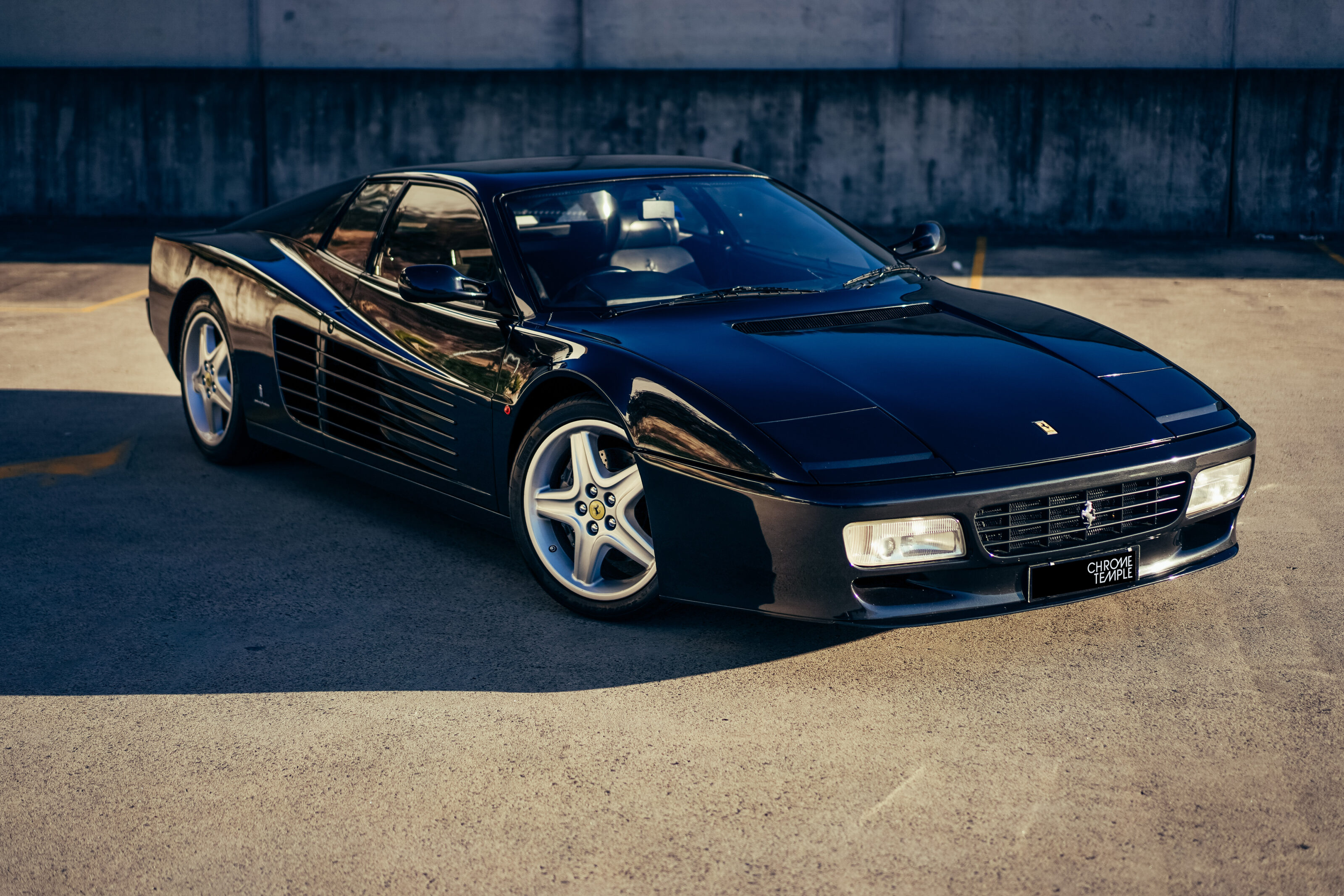For a decade that gave birth to MTV, games consoles and blockbuster movies, it’s only fitting the 1980s spawned a dramatically styled and evocatively named Ferrari that would become deeply entrenched in popular culture.
The strikingly straked, wedge-shaped Testarossa was given its glamorous unveiling on the eve of the 1984 Paris motor show at a famous nightclub on the Champ Elysees, announcing itself as the successor to the 512 BB.
High-gloss Testarossa posters would soon be Blu-tacked to millions of bedroom walls (probably alongside a print of the Lamborghini Countach as well as Madonna), while millions more would drive one – albeit a red pixelated Spider version in Sega’s addictive driving game, Outrun.
And perhaps most famously, a gleaming-white example took to the dark streets of Florida as the hero of heavily stylised TV detective drama Miami Vice (replacing a fake Daytona convertible in that equally well-known off-screen sub-plot).
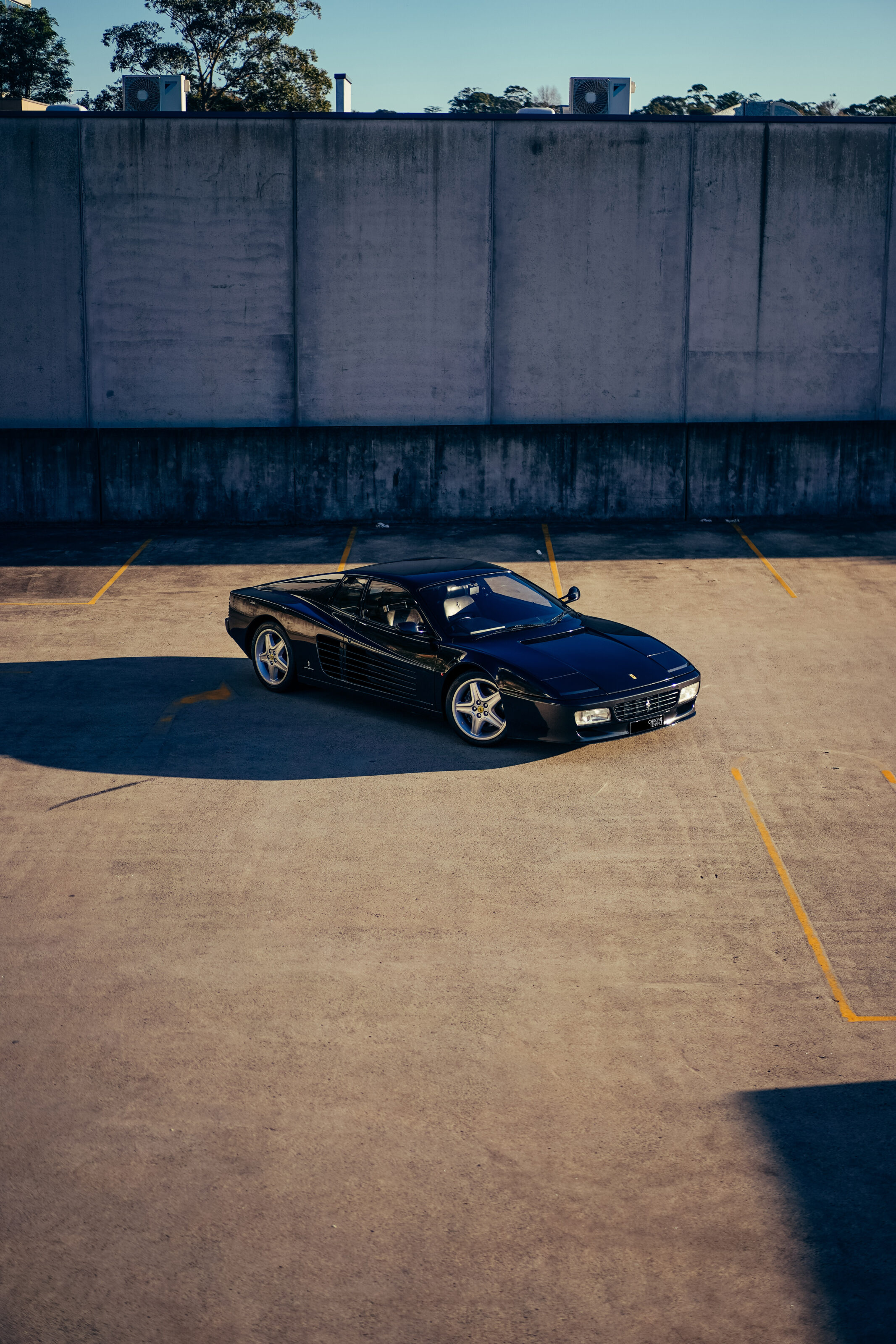
By the start of the 1990s, however, Lamborghini had moved ahead in the pin-up performance wars with its devilish replacement for the legendary Countach – the Diablo.
Ferrari’s response was to give the Testarossa a thorough update for 1992. And a new name.
The 512 designation returned to indicate the engine capacity and cylinder count, and Testarossa was abbreviated to TR.
Yet with only subtle design changes to the Pininfarina-penned original, the 512 TR could (and can) be easily confused with the Testarossa.
The wedge shape, pop-up headlights, slatted tail-lights, squared-off rear end and the especially distinctive side strakes – guarding the side-mounted radiators – were all largely untouched.
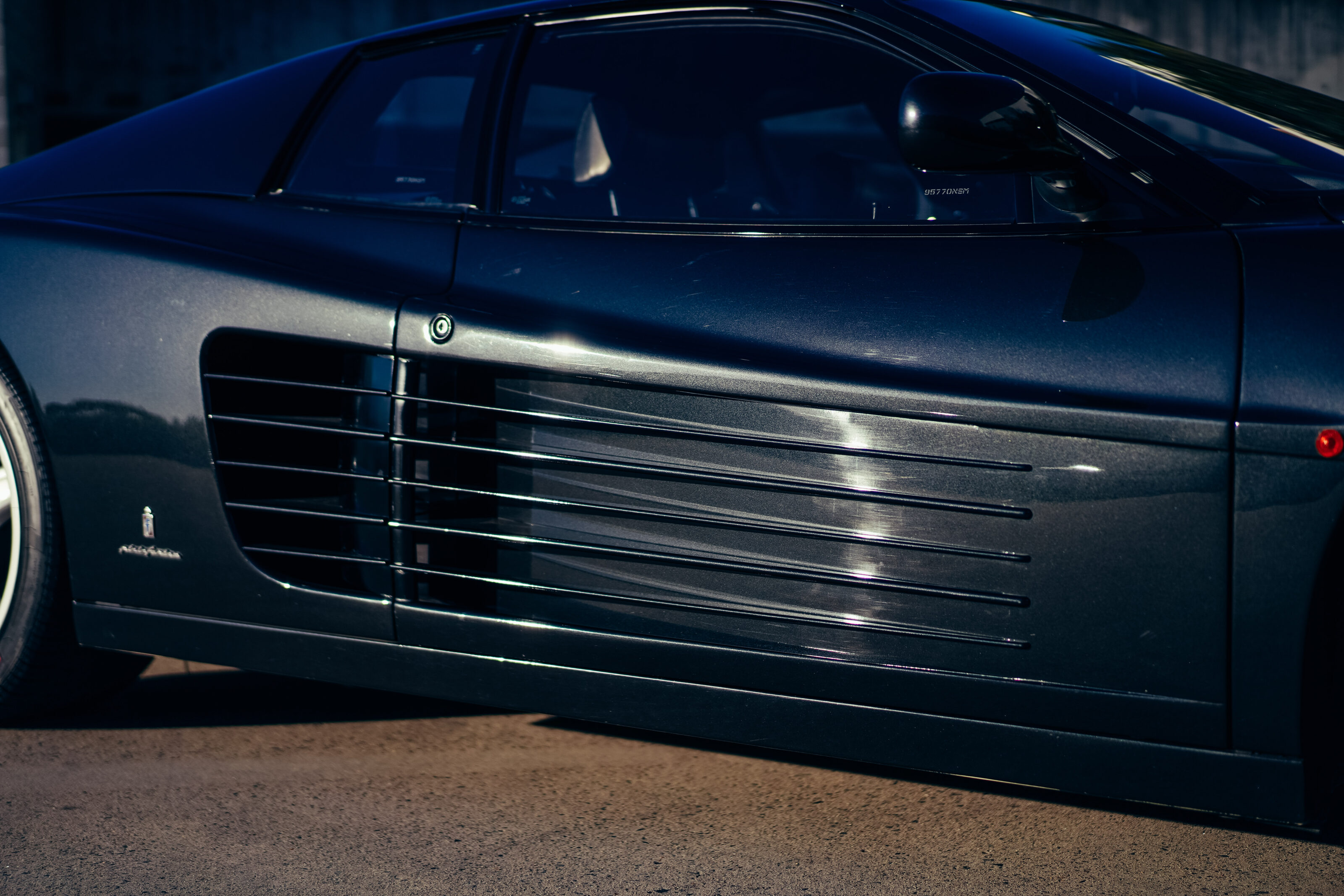
Spot-the-differences to circle included a front apron and sills that now matched colour of main body, sail-plane buttresses that now extended right to the edge of the rear deck, and a curvier, standalone grille that now mirrored the face of Ferrari’s V8-powered 348.
The wheels were also now 18 rather than 16 inches in size, and featured a five-bolt design rather than the single nut, though the five-spoke rims otherwise kept faithful to the ‘star’ rims of the original Testarossa.
The flat-12 engine was still technically a spread-eagled (180-degree) V12. And it still featured the red-coated cylinder heads that gave the Testarossa – Italian for ‘red head’ – its name, just as it had on various Ferrari racing sports cars of the late 1950s and early 1960s.
However, the engine was given more power with substantial revisions and lowered a further 30mm to improve the car’s centre of gravity (which was still paradoxically high considering the horizontal layout). Engineers also improved the five-speed manual gearbox, and the suspension was also lowered and tweaked.
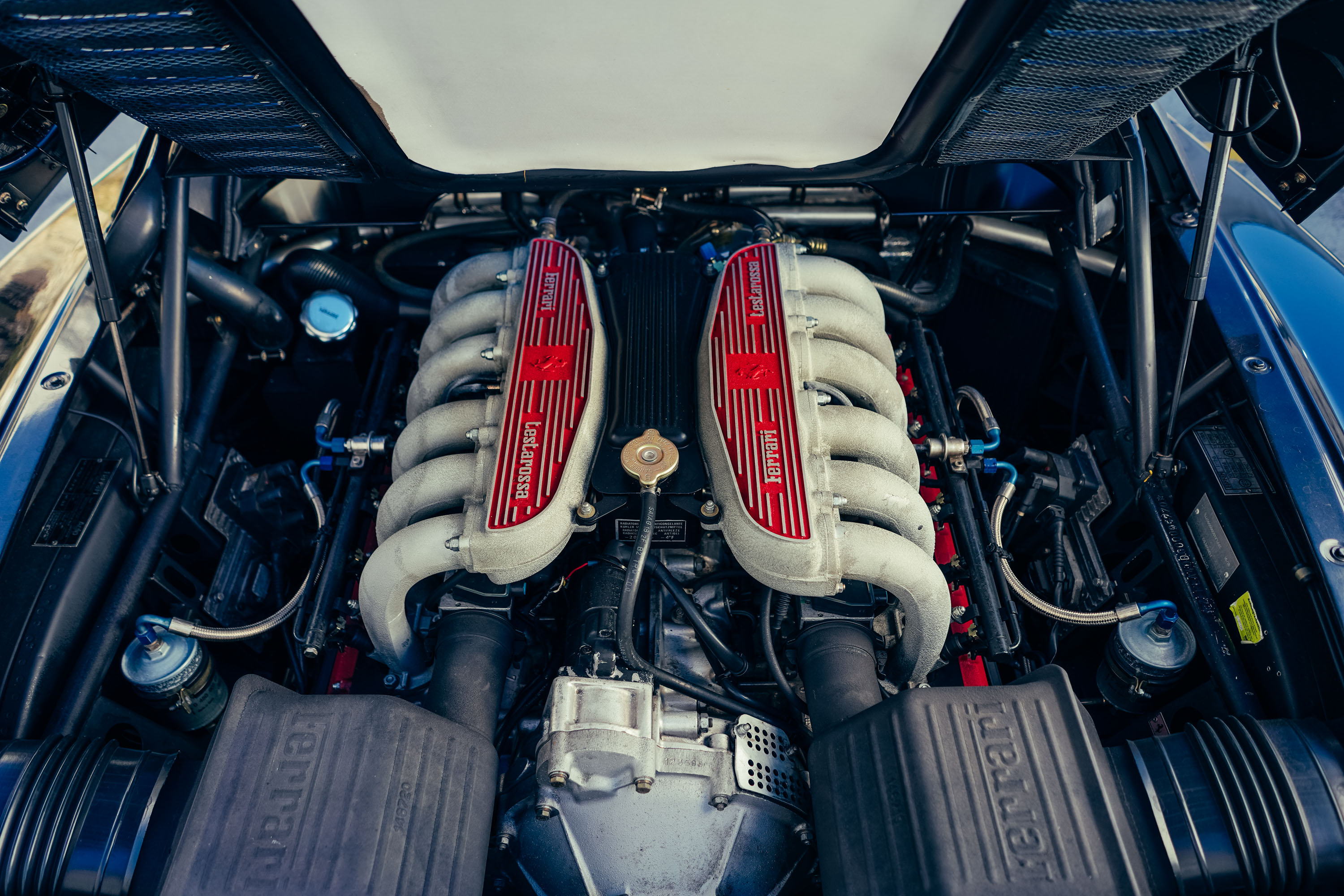
Inside, there was also little about the 512 TR’s interior to convince a Testarossa owner they had got into a different car. The centre stack was exchanged for a compact panel of gauges, and the centre console lost its cassette-tapes holder for what was now a compact-disc world.
The dash otherwise retained its unpretentious design, as well as the audio player and vanity mirror hidden behind dash panels.
We’re about to experience the 512 TR for ourselves – courtesy of online automotive auction specialists Chrome Temple Motors (see details at the end of the article).
The TR’s doors don’t feel heavy despite being constructed from steel where every other body panel bar the roof is made from aluminium.
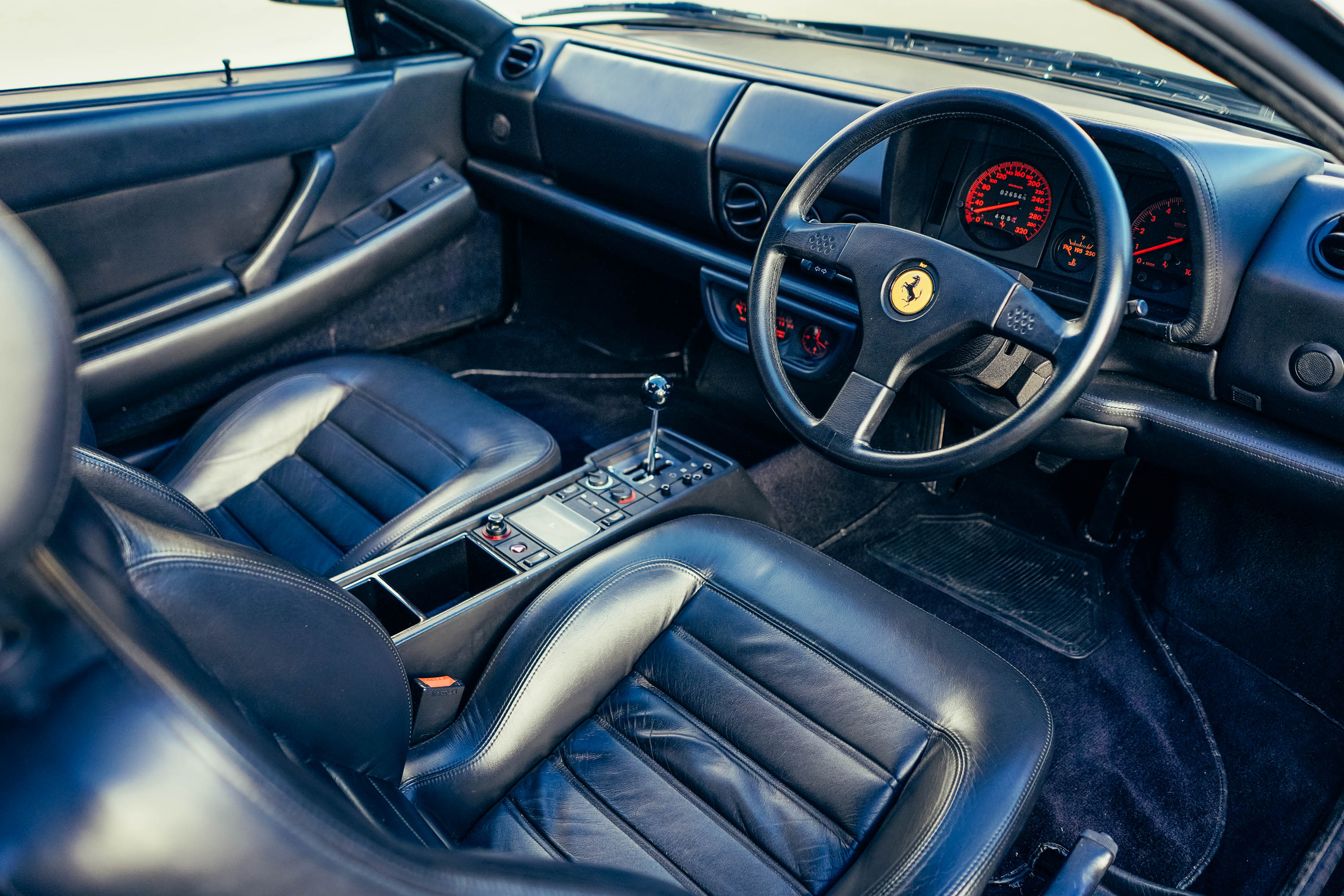
Easing into the driver’s seat is relatively dignified, at least with my 5ft 8in frame, with no Countach/Diablo-style scissor doors on which to potentially bump your head, and wide doors sills that are virtually flush with the cabin floor.
En route to the seat, you bypass the handbrake and chrome latches for the engine hatch and bonnet.
However, there’s also confirmation that, in 1992, Italian supercar builders had still yet to get a handle on great ergonomics.
The footwell is cramped, with the encroaching wheelarch and a left footrest that’s a near-impossible option for anyone with feet larger than a size 5.
En route to the seat, you bypass the handbrake and chrome latches for the engine hatch and bonnet.
However, there’s also confirmation that, in 1992, Italian supercar builders had still yet to get a handle on great ergonomics.
The footwell is cramped, with the encroaching wheelarch and a left footrest that’s a near-impossible option for anyone with feet larger than a size 5.

You otherwise nestle relaxingly into the ribbed-leather seats with their plump bolstering.
Vision out is surprisingly good, helped by dual electrically adjustable side mirrors (the Testarossa originally featured just one, high on the A-pillar, before Ferrari added a second in 1987).
The rear haunches are conspicuous in the side mirrors, yet you’re not overly conscious of the TR’s two-metre width. The Testarossa was said to have been the widest production car on the road at the time of its launch, but by today’s standard of vehicle sizes it’s not particularly intimidating to drive in traffic.
The clutch pedal feels calf-strainingly heavy when being used regularly to engage first gear around town, compounded by steering that lacks power steering and a turning circle that is anything but tight.

The thickly grooved, alloy open-gate shifter and its thin, alloy lever – topped with a black ball of a gearknob that becomes fully enveloped by your palm – look like a work of art.
It also shares a dog-leg H pattern with the V12 Lambos (and a handful of other sporty cars of the era), with first gear positioned bottom left immediately below reverse.
Once past the upwardly angled first-to-second shift that takes the most conscious effort, the gearbox becomes a thoroughly tactile, mechanical delight. The clutch feels more effortless and the lever slots reassuringly and rewardingly into each gate with the need to be strong-armed.
Neither does the shifter need to be overworked, such is the flexibility of the 512 TR’s 4.9-litre 12-cylinder.
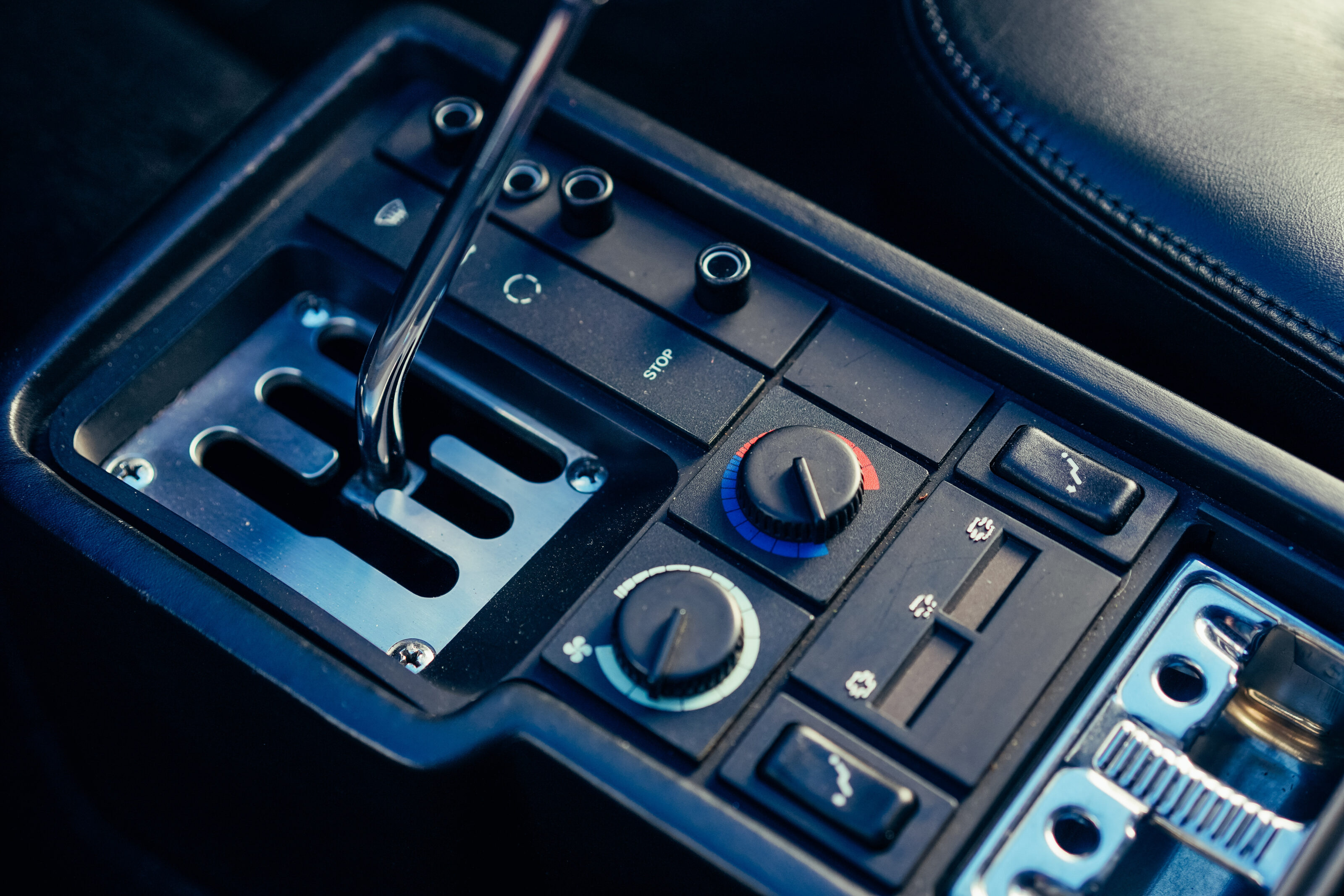
Updates including a more sophisticated Bosch engine management system extracted some extra power and torque over the original Testarossa. Power jumped from about 290kW to 315kW, with torque increased from 491Nm to 498Nm – though produced 1000rpm earlier at 4500rpm.
All the revisions cut a whole second from the Testarossa’s 0-100km/h claim, with the TR quoted at 4.8 seconds.
In 1992, the TR was still slower than a Diablo but was quicker than Honda’s NSX, even if the Japanese supercar did operate on half of the Italian duo’s cylinder count.
Today’s 812 Superfast inevitably pulverises the 512 TR for acceleration, yet the 1990s supercar still feels tremendously quick. And it sounds glorious as the flat-12 howls on its way towards the 7300rpm redline.
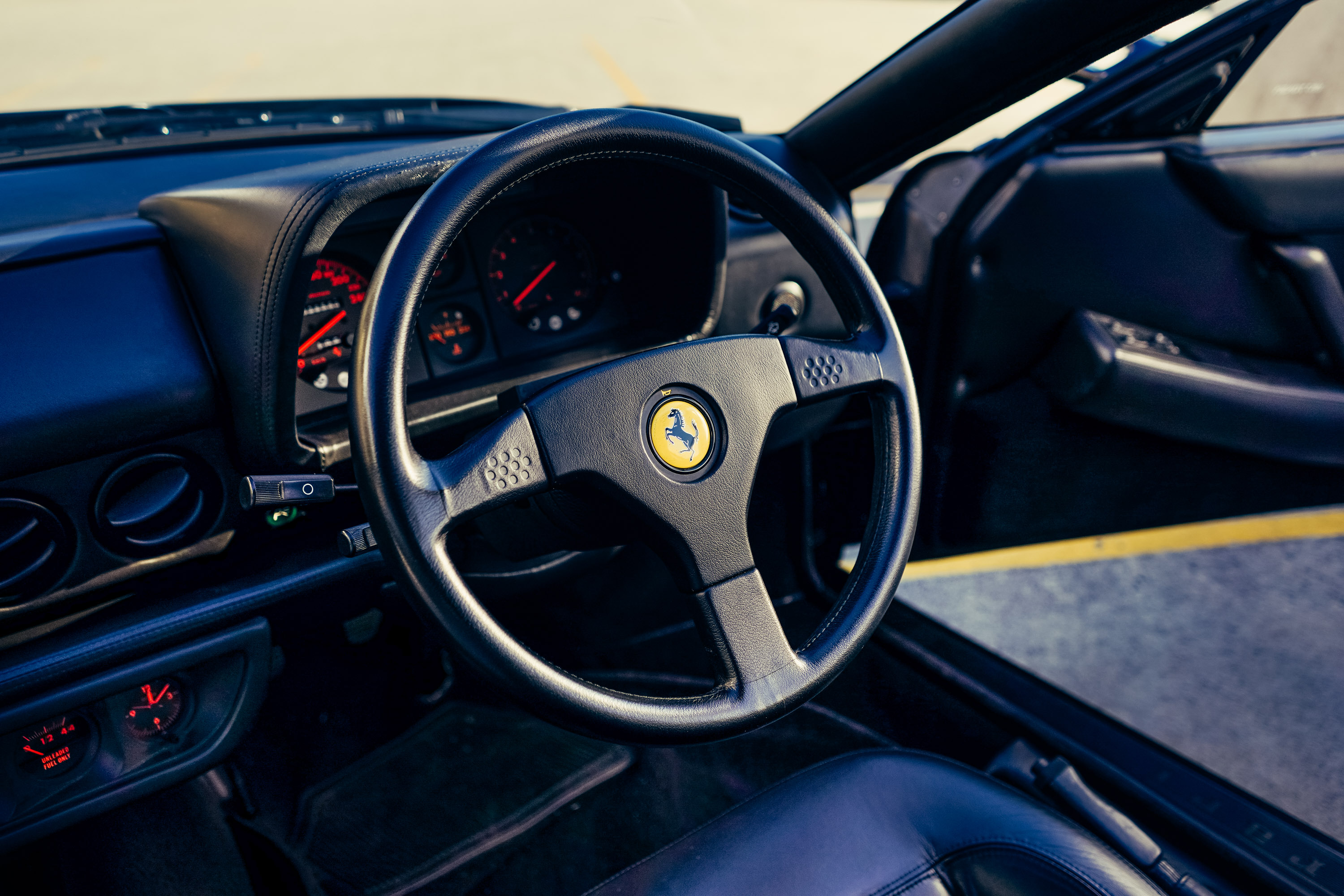
The throttle pedal is long-ish in travel but rewardingly linear in its response. For a legendary engine, the 4.9-litre absolutely doesn’t disappoint.
While being respectful of the fact we don’t own this particular 512 TR, we’re blessed with bone-dry roads under a warm winter sun to encourage us to push cornering speeds to a point where the TR’s nice, trustworthy handling balance can be appreciated.
The steering feels utterly natural and significantly lighter at speed, guiding the front end with accuracy.
And while the driving position is partially compromised, the ride comfort of this supercar is impressive – delivering a compliance over some particularly bumpy country roads that was unexpected.
It’s easy to understand how the Testarossa and its evolutions were positioned more as a GT car than Ferrari’s other 1980s hero – the turbocharged V8 F40 that was far more hardcore and very much a racing car for the road.
Although all Testarossas were a two-seater rather than a 2+2, it’s a surprisingly practical car.
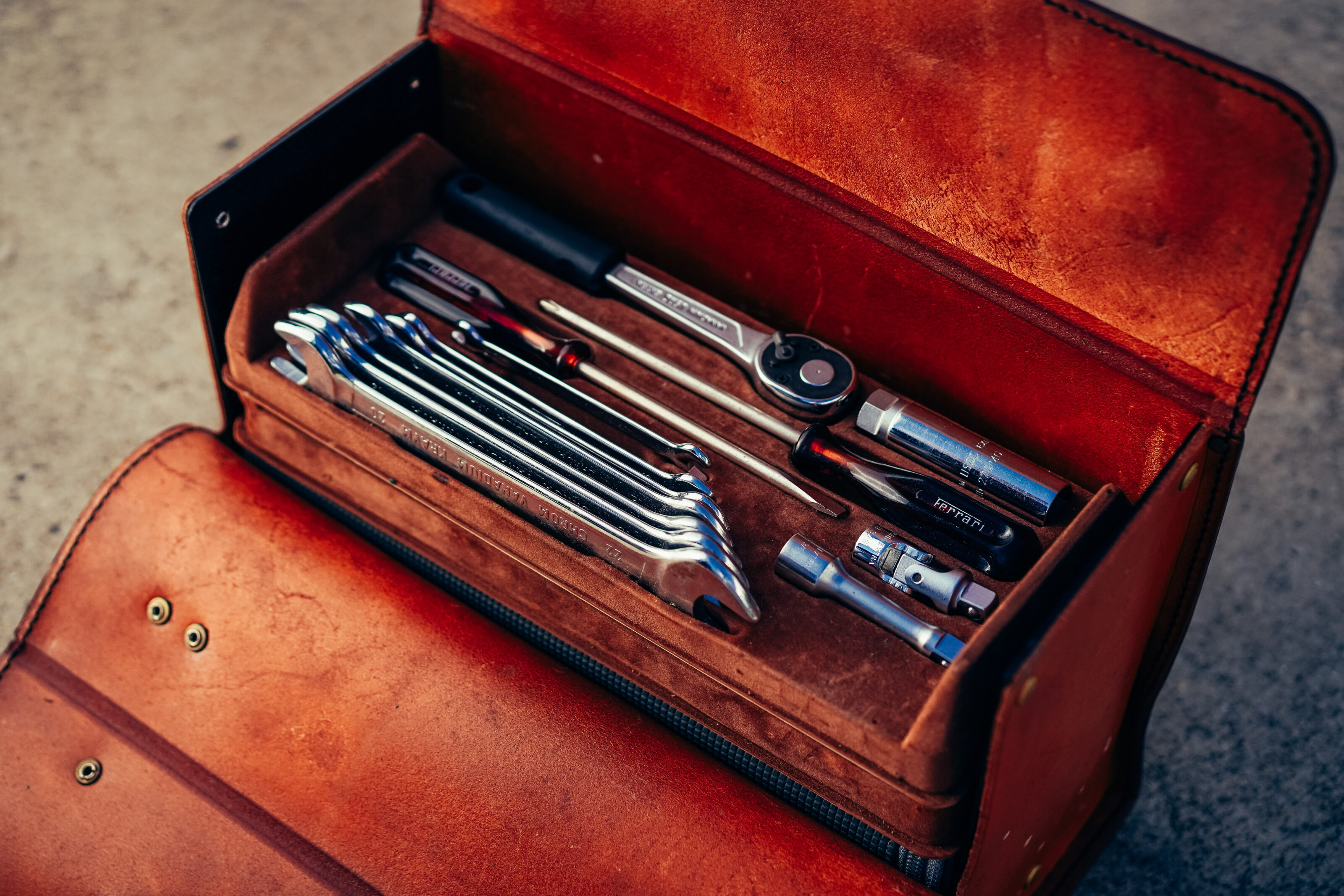
A set of Italian leather holdalls were available and could secured behind the seats via straps. And the rest of the set could be stored under the front bonnet, where there was significantly more room compared with the 512BB after Ferrari moved the radiators from the nose to the side (to also resolve cabin-overheating issues).
In 1994, the 512 TR transitioned into the F512 M as Ferrari reintroduced its favoured F (for Ferrari) prefix while adding M for modificata.
The word ‘modified’ has never sounded so poetic, though it was also relevant.
Aerodynamics, performance, suspension and braking were among key areas of improvement, though many – including this author – lamented design changes that included a move to faired-in headlights and a return to more traditional circular tail-lights.
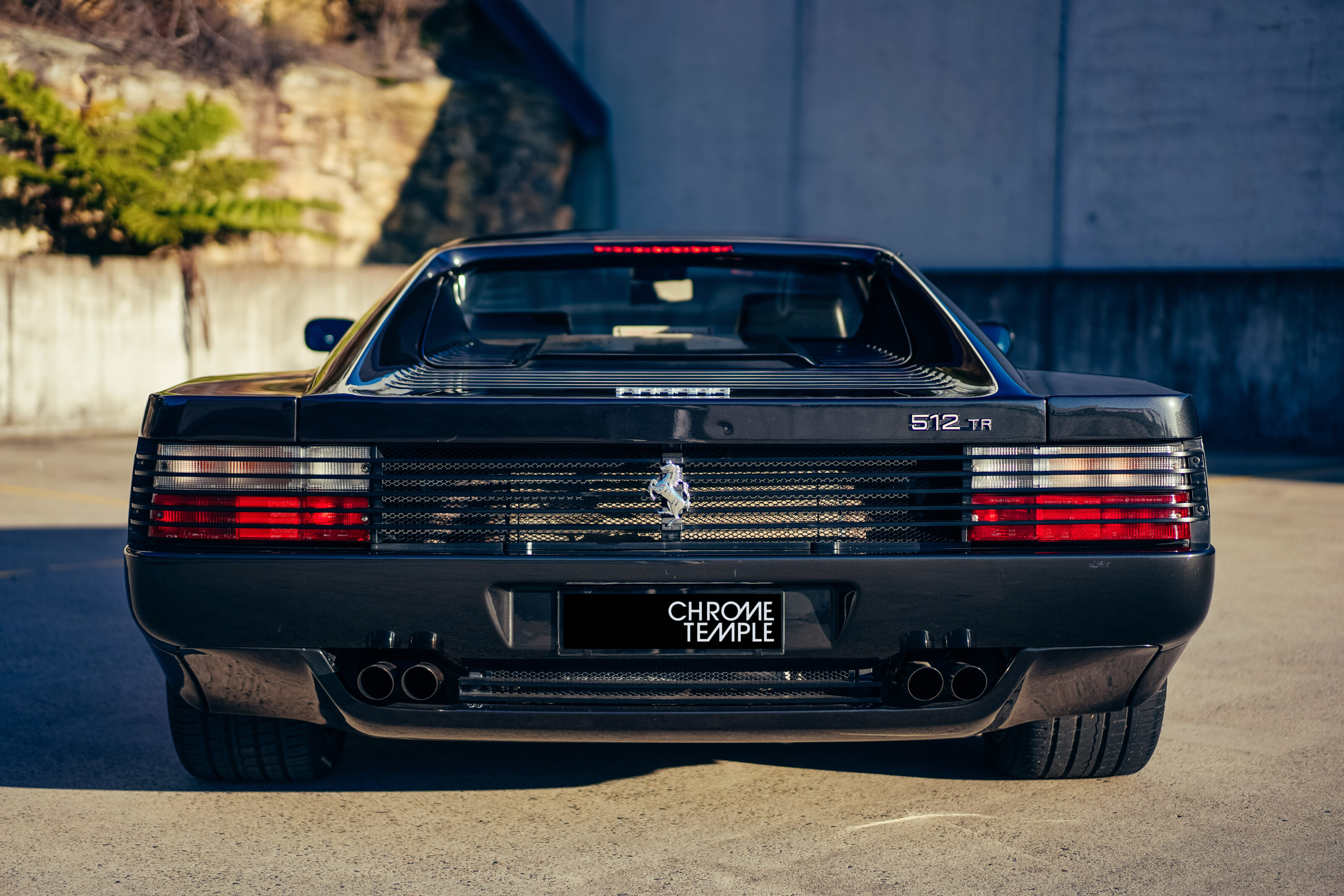
The F512 M is the rarest Testarossa with only 501 were built. Replaced after just two years by the front-engined V12 550 Maranello, it ended nearly a quarter of a century of mid-engined flat-12 production Ferraris.
In total, nearly 10,000 units of the ‘Redhead’ series were built – making it a hugely successful model in Ferrari’s 12-cylinder lineage.
The Testarossa – in any of its generations – isn’t generally regarded as one of the greatest Ferraris of all time. Yet it remains one of the coolest.
BID FOR THIS 1992 FERRARI 512 TR
This stunning example from Ferrari’s legendary Testarossa series is headlining Chrome Temple Motor’s Vehicle of Distinctions online auction event, running from 18th August to 2nd September.
Presented in a particularly rare black-on-black specification, this right-hand-drive, Australian-delivered model also has less than 27,000km on the clock.
Equipment includes fully working air-conditioning, electric windows and electric mirrors.
Head to chrometemple.com/motors for more details on how to bid on the 512 TR, as well as other enticing models among an impressive auction catalogue.
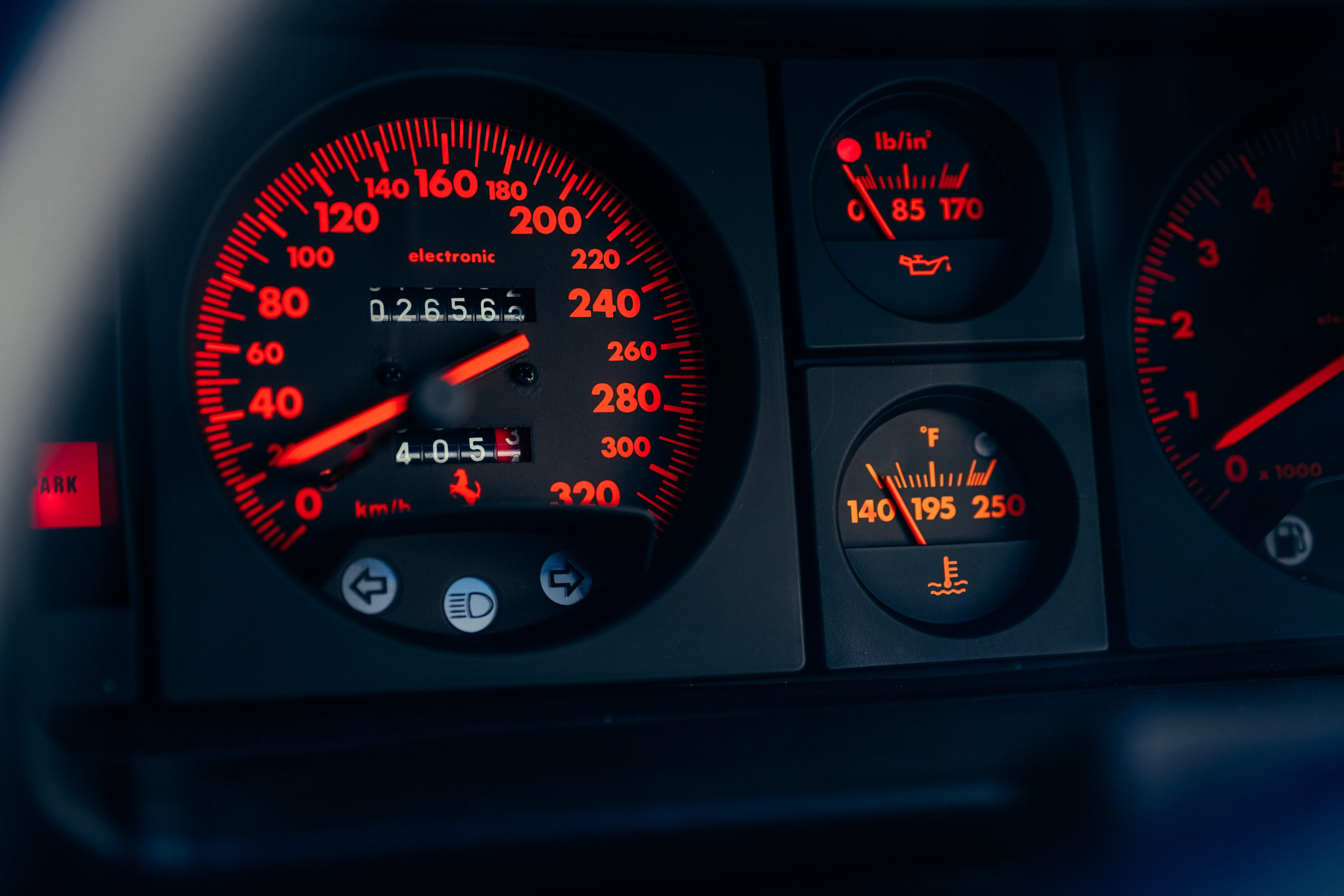
We recommend
-
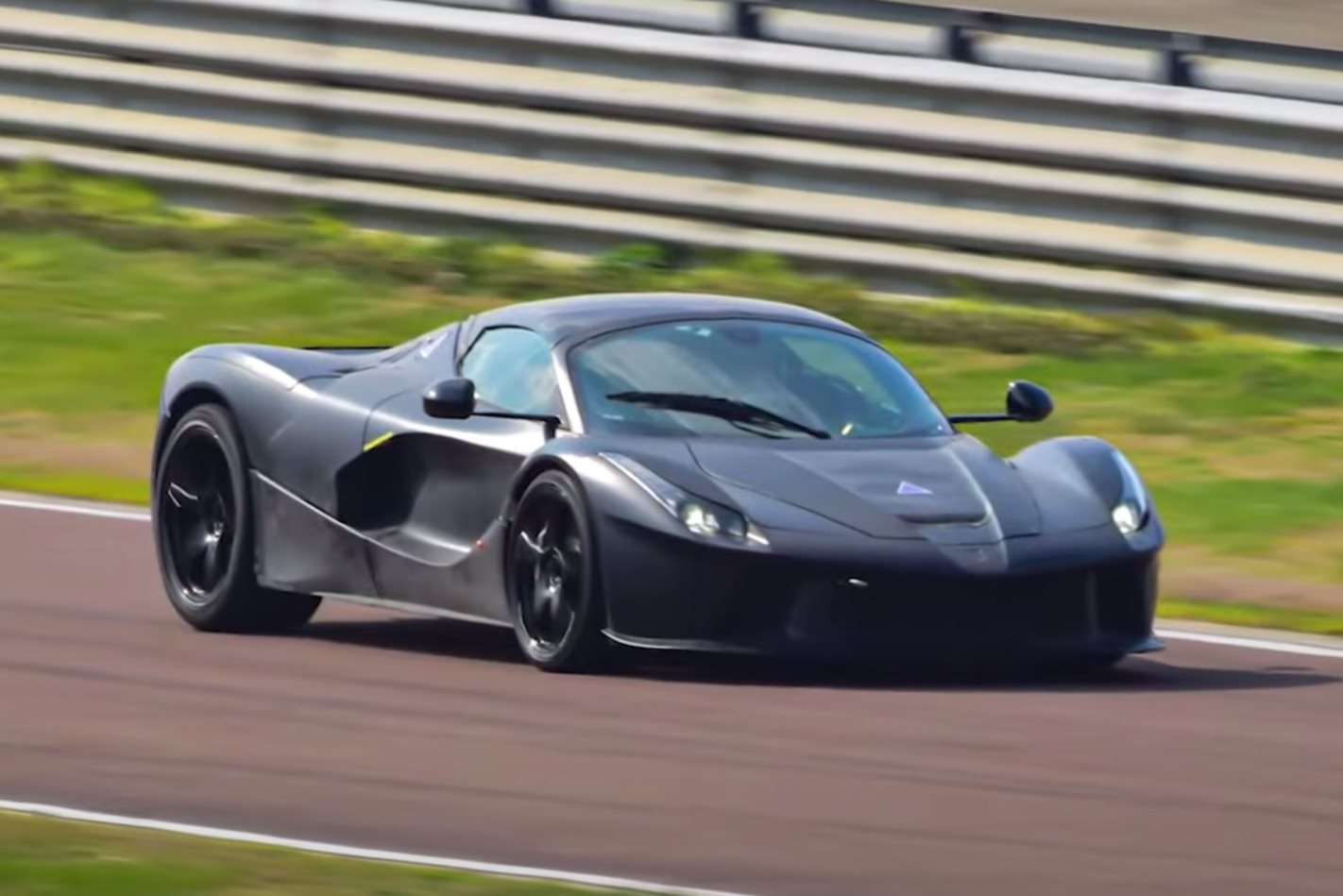 News
NewsFerrari LaFerrari successor spied at Fiorano
Next-gen hypercar will likely feature N/A V12 with more hybridisation than ever before
-
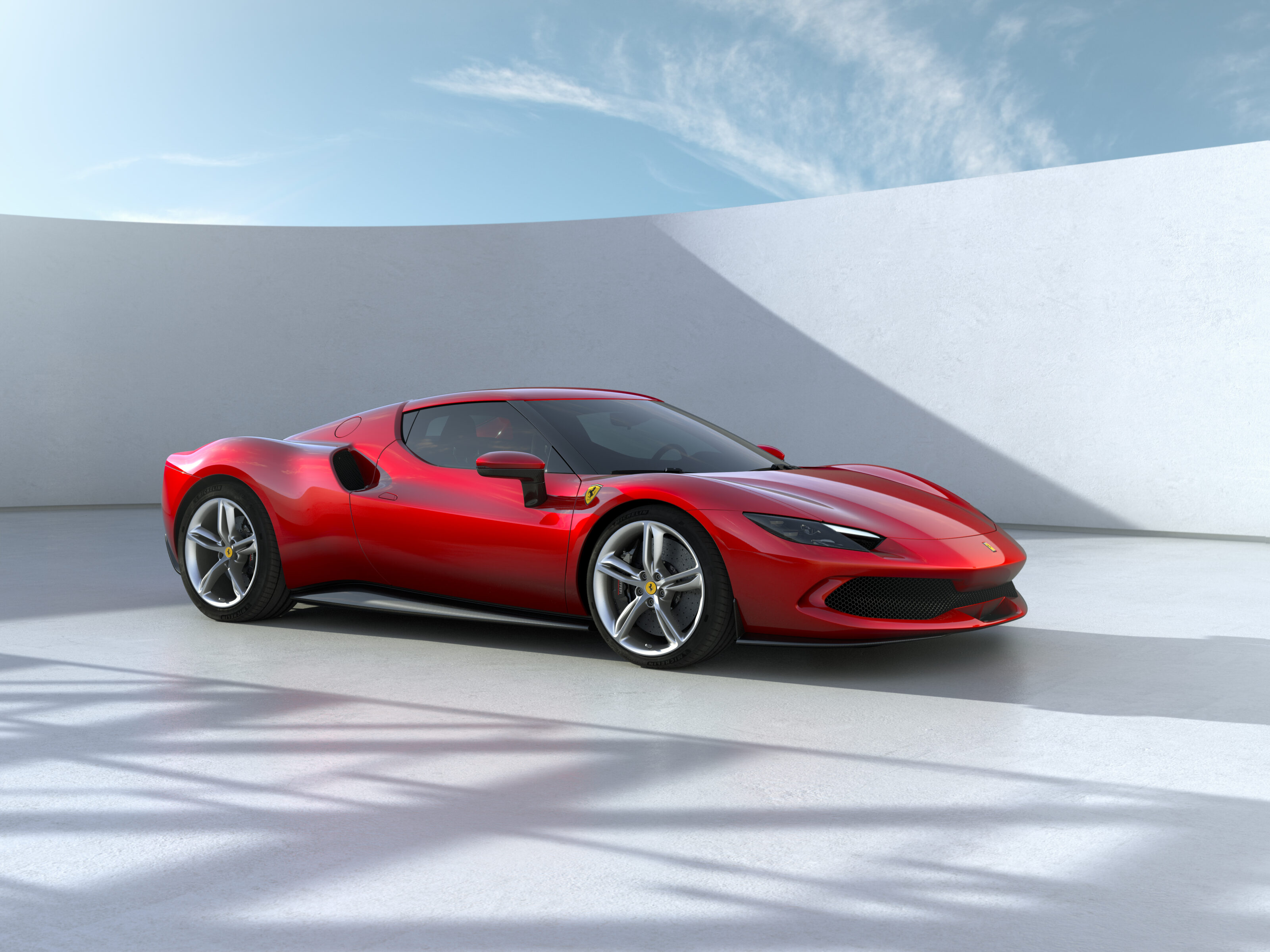 News
NewsFerrari 296 GTB debuts with hybrid V6
Wicked plug-in hybrid sports car is one of the fastest to come out of Maranello
-
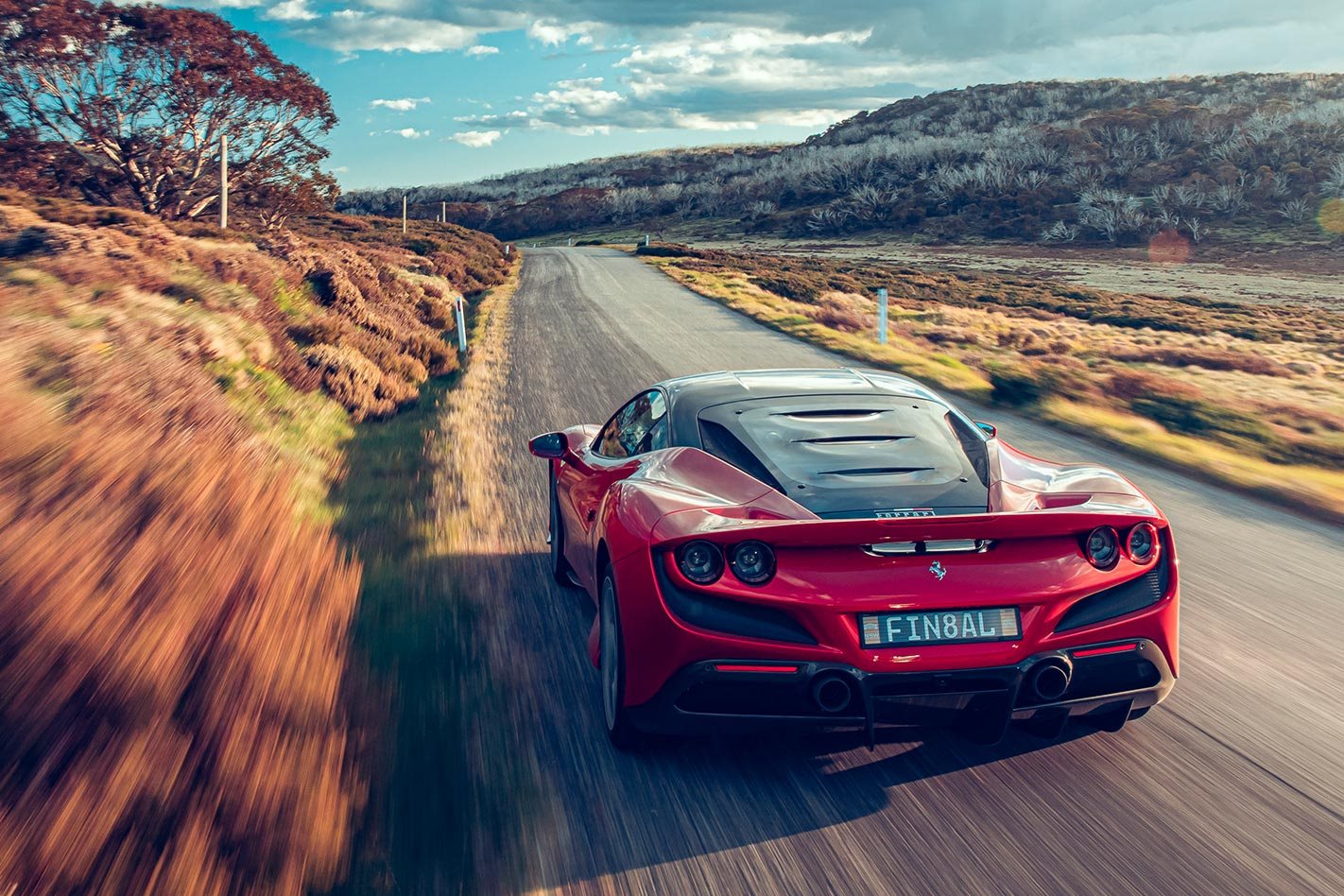 Features
Features2021 Ferrari F8 Tributo vs Victorian lockdown
As curfew lifts, could a flat-out run in Ferrari’s finest restore a little sanity?


